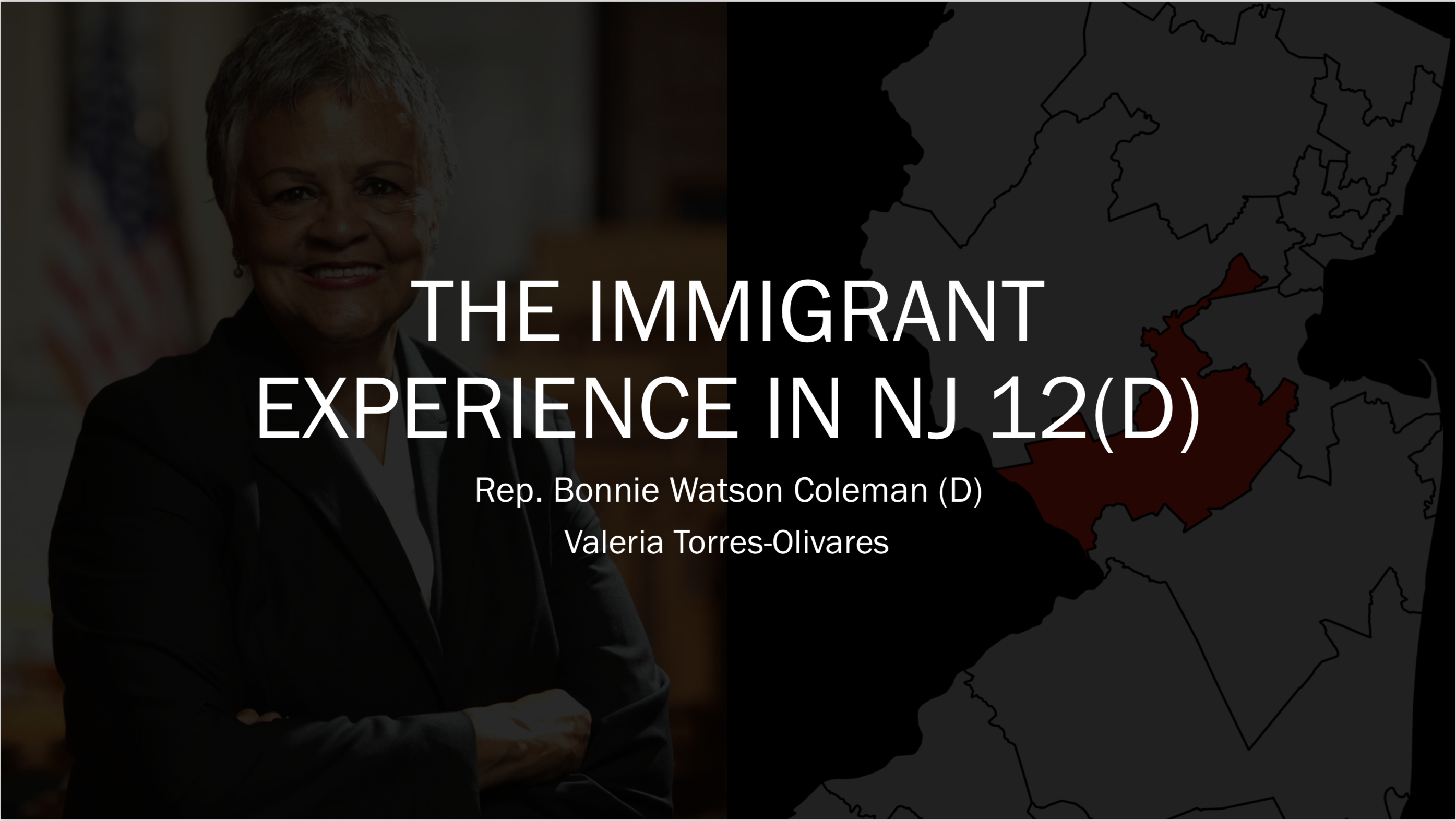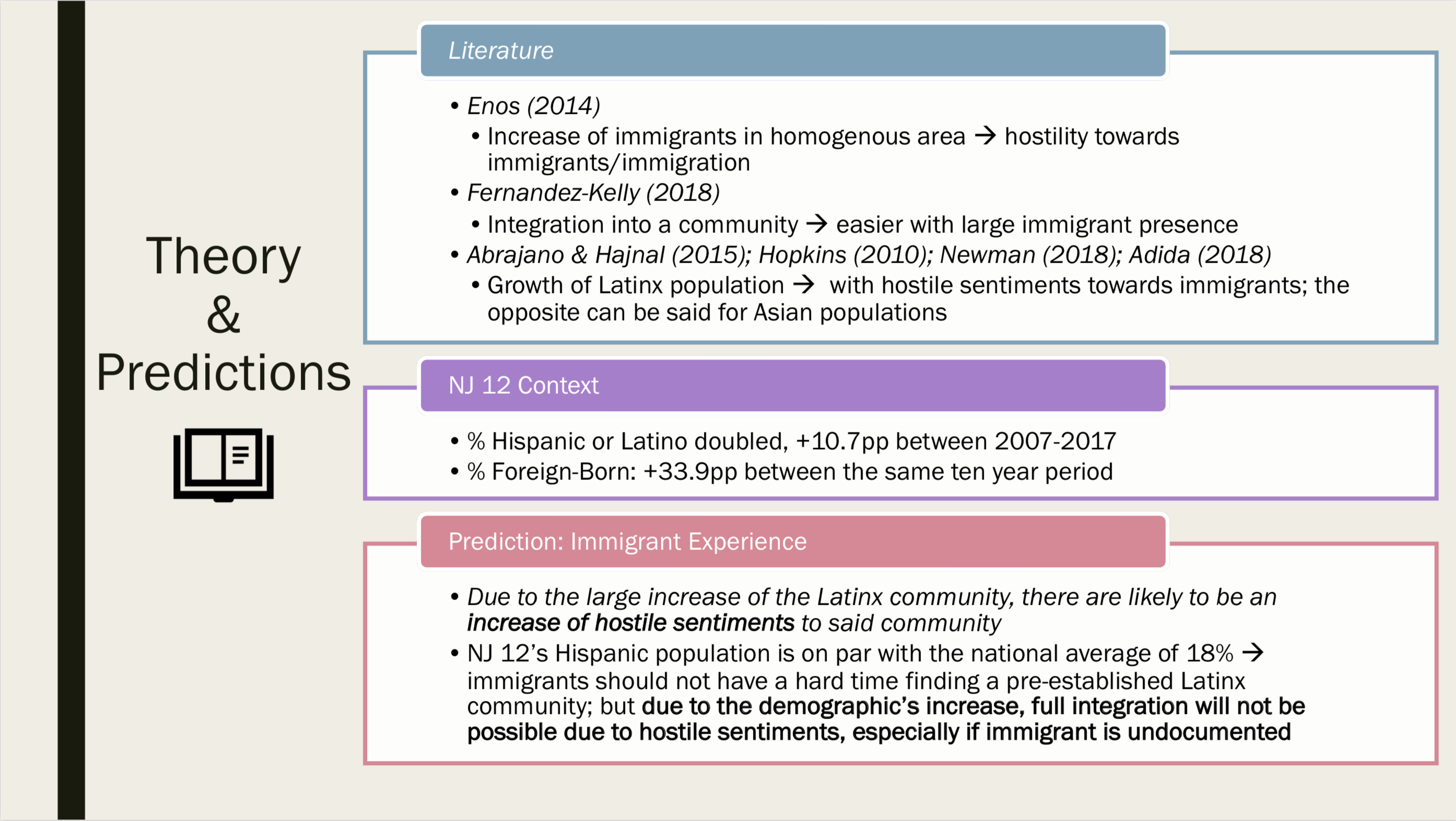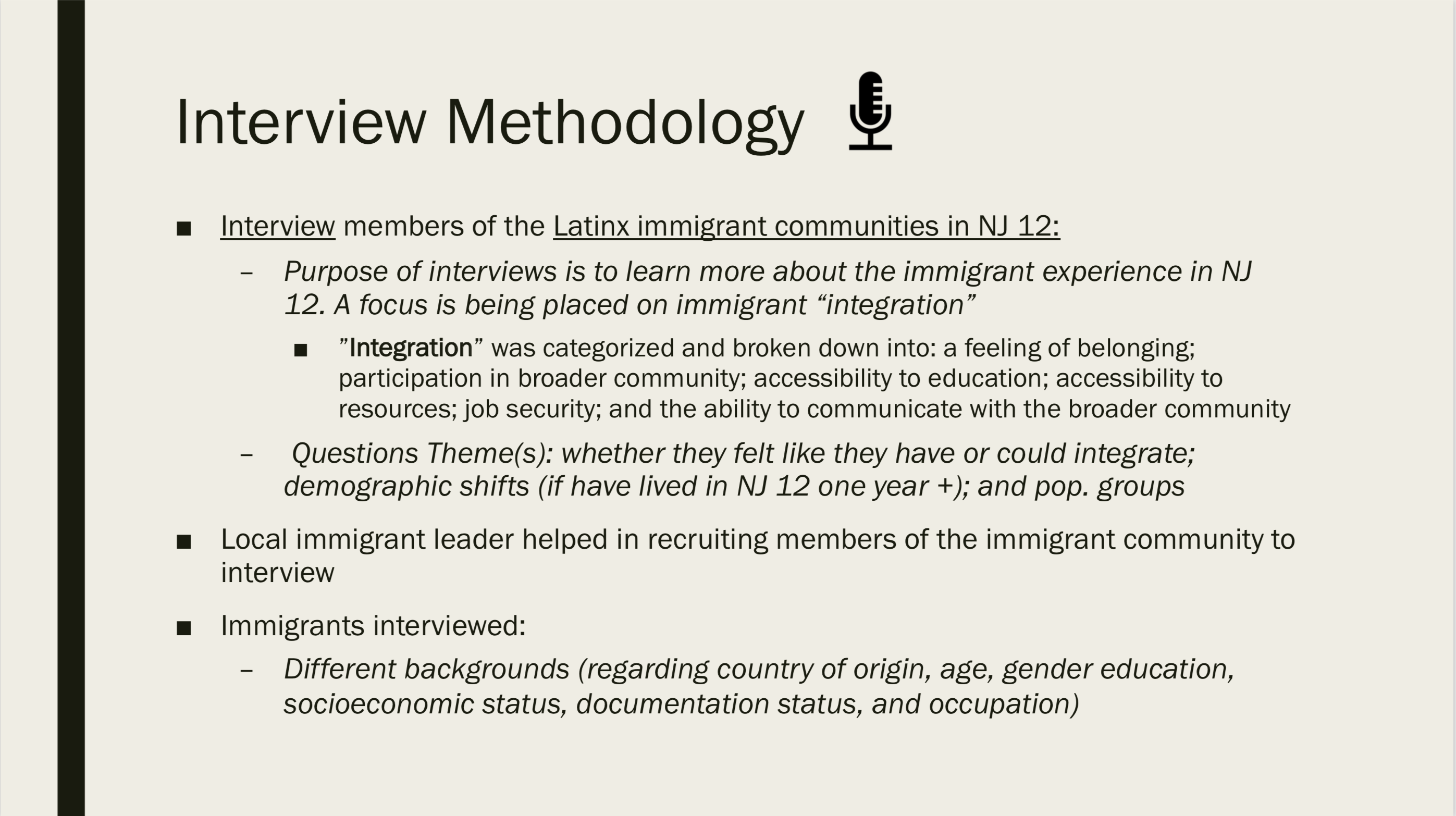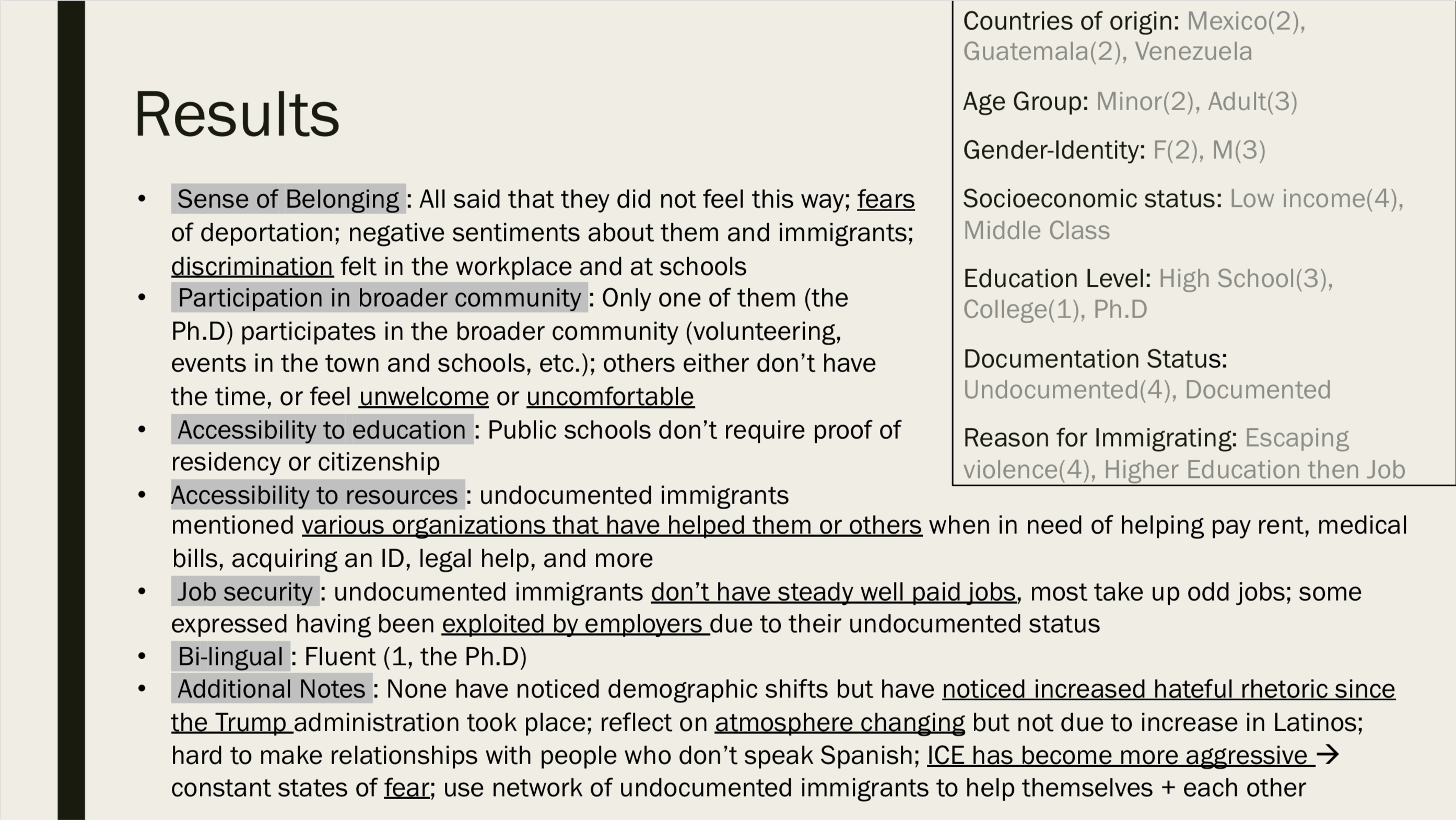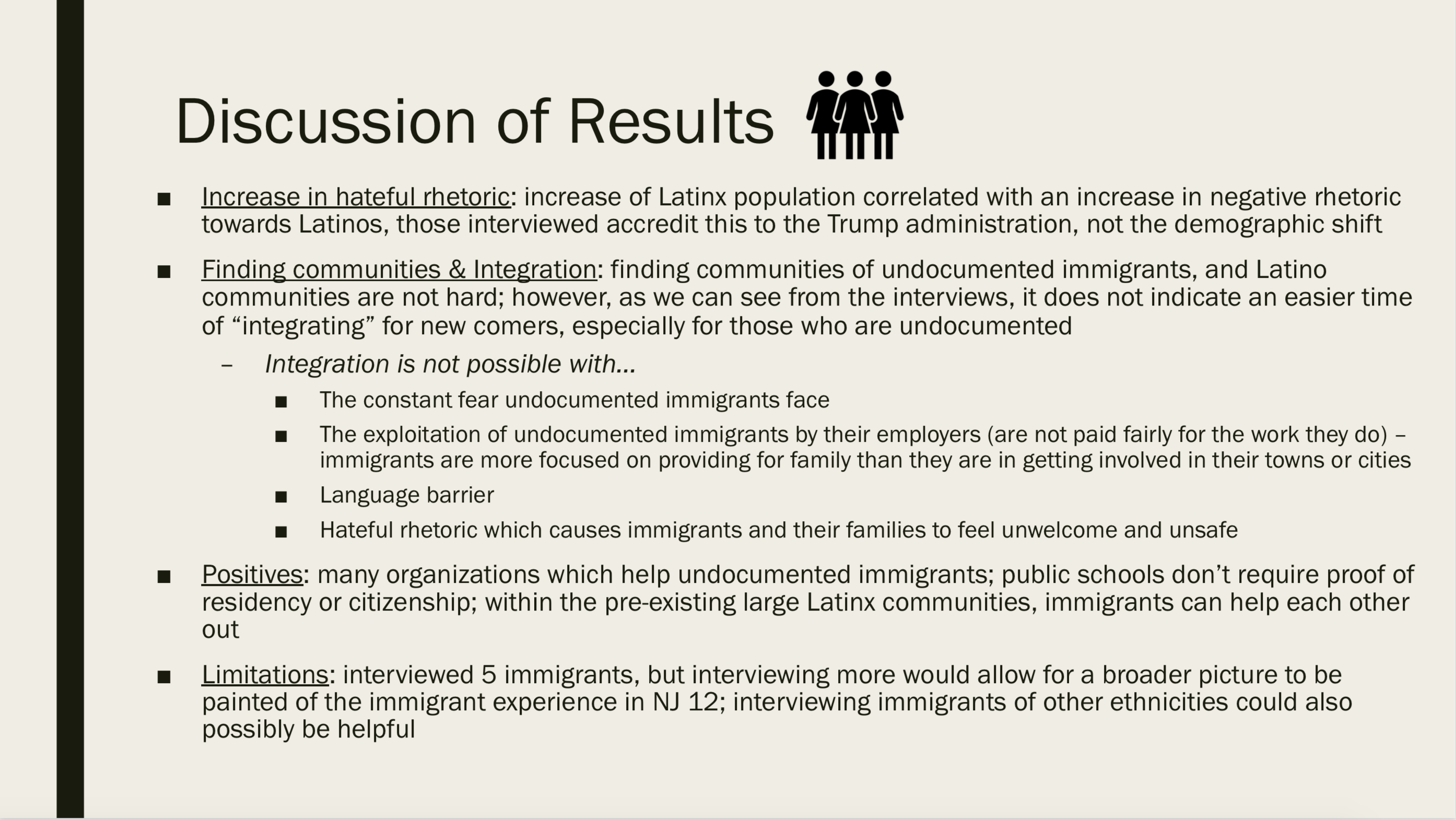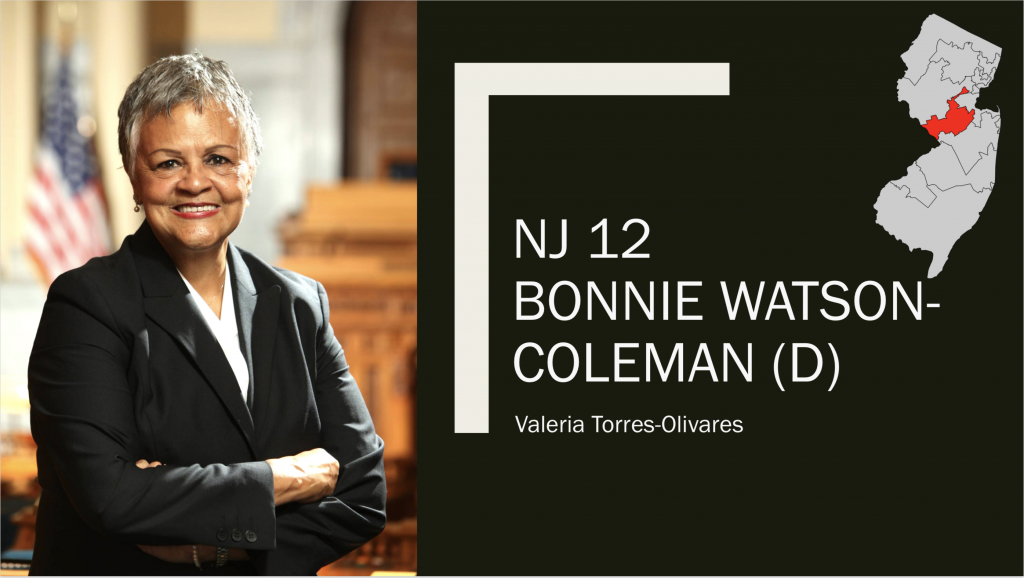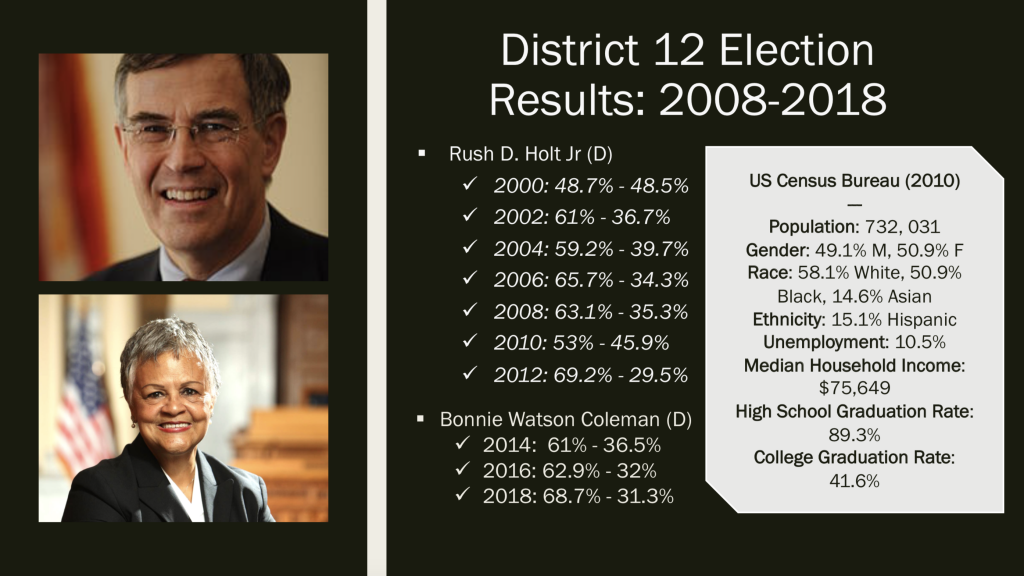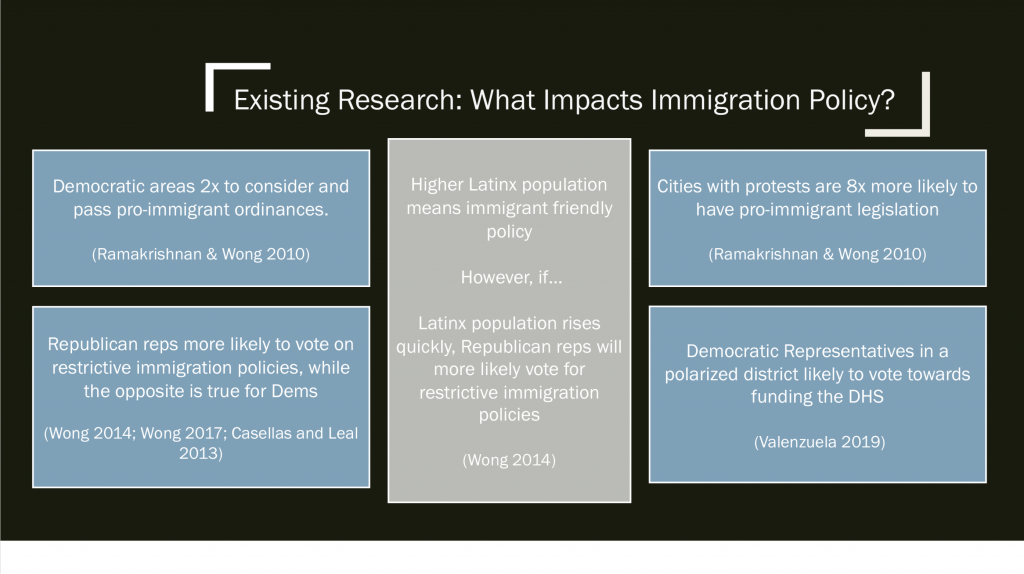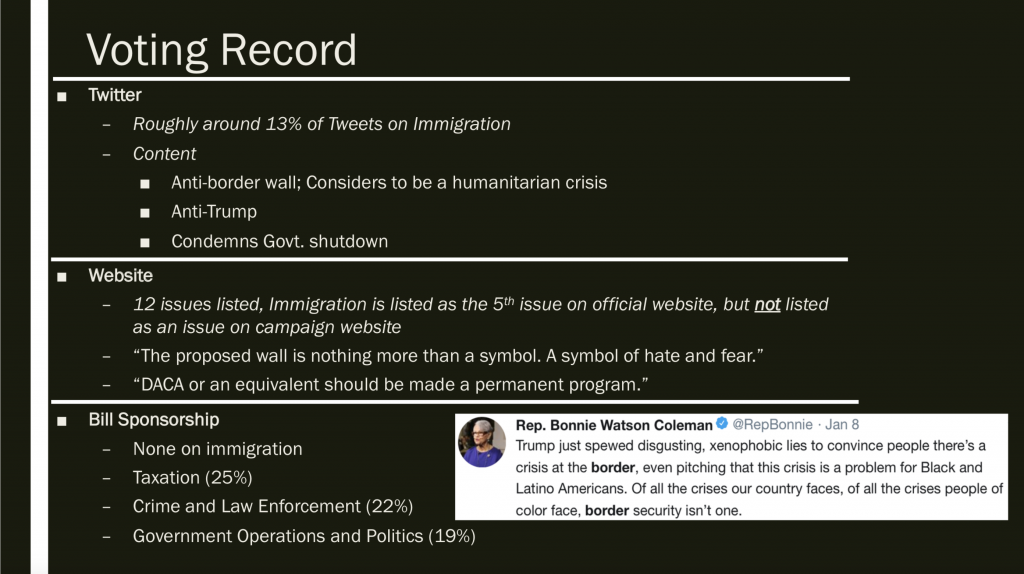Abstract:
Congresswoman Bonnie Watson-Coleman of New Jersey District 12 tells her constituents through her voting history, website, and social media, that immigration is an issue she finds of importance. While the Congresswoman has done great work with the Healthy MOM Act, the End For-Profit Prisons Act, and more;she has room for improvement when it comes to advocating for documented and undocumented immigrants alike. I argue using interviews of immigrants from NJ 12 and peer-reviewed research that it not only is beneficial on a moral ground but on a strategic one as well that she advocates more actively for pro-immigrant policy and work to help those not just nationally but in her own district through partnerships with organizations. Action is what counts.
Op-Ed:
To my knowledge, just last week there were three more undocumented immigrants detained by ICE in Princeton, NJ. Under the Trump administration, undocumented immigrants across the country have had more and more reasons to live in fear due to the increased aggressiveness of ICE and anti-immigrant rhetoric. While there has been a push for politicians to be more vocal about their stance on immigration, it doesn’t necessarily mean that they act in a substantial manner when it comes to creating policy that will benefit their districts’ constituents. This lack of action when claiming a stance on immigration can be seen in elected officials across the US, even in the historically Democratic District 12 of New Jersey.
Bonnie Watson-Coleman, the Congresswoman for NJ 12, hasn’t created or presented any sort of immigration policy, she has voted to date on nine billsthat have to do with immigration or ICE. The majority of those bills were presented by Republican Representatives. Many of these bills had to do with gaining funding for the construction of a wall on the southern border, to prohibit funding to state or local governments that are sanctuary cities, and more. The one bill Bonnie Watson-Coleman voted “Yea” on was a bill called the “Anti-Border Corruption Reauthorization Act of 2017.”
When looking at Watson-Coleman’s campaign website, one will see that immigration is not listed as one. On her official government website, one will find a section for immigration this time; however, once clicking into her page on immigration, one will find a small paragraph about her support for DACA and her belief that Trumps proposed wall is a symbol of hate. In addition to this, on April 5th, Watson-Coleman’s trip as a part of a delegationfrom the Border Security, Facilitation and Operations Subcommittee that examined U.S. operations at the United States-Mexico border.Her trip to the borderand a migrant shelterin El Paso, Texas, was documented on her social media account. The purpose of the trip being to learn more about the way undocumented immigrants are treated at the border as well as what can be done to insure their treatment is humane. While it’s great that Watson-Coleman is getting to learn more about the issues immigrants are facing entering this country and that she has a more progressive stance on immigration, it is unclear on what she has done to help the undocumented constituents that live in her district.
Although NJ 12 is lucky enough to have such a progressive Congresswoman, it takes more than just picking sides to create and generate positive change, especially when it comes to the undocumented and documented immigrant experience within her district. In NJ 12, the Latino population went up +10.7pp in ten years, scholars like Abrajano & Hajnal (2015) have foundthat as a result one should expect to see negative rhetoric towards immigrants increase in the area where the Latino population has increased substantially and quickly. However, Patricia Fernandez-Kelly’s research foundthat integration of immigrants in a community is easier if there is already a pre-existing large presence of immigrants within said community. In order to find out more about the immigrant experience in NJ 12, I ended up interviewing five immigrants, shown here. Data such as: age, gender, country of origin, length of time in the community, employment, etc. was taken to contextualize the responses. I focused mostly around the “integration” of the Latino immigrant. I defined “integration” into categories: feeling of belonging; participation in broader community; accessibility to education; accessibility to resources; job security; and the ability speak English.
When asking the immigrants if they had a sense of belonging in NJ 12, all of them answered no. This sentiment is specially seen in the undocumented immigrants of whom I interviewed; the reason for this being mainly attributed to the fear of deportation they face on a daily basis since ICE has become more aggressive. Another reason would be the negative rhetoric them and other immigrants receive, including their kids at school. As a result of the lack of belonging and the fact that many of those interviewed work multiple jobs and are students, they do not participate in the broader community. One great thing about the public schools in NJ 12, is that students do not need to demonstrate citizenship or legal status in order to get an education. In addition to this, although there are many organizations which help undocumented immigrants when in need of helping pay rent, medical bills, acquiring an ID, legal help, and more; some organizations cannot help because of an immigrants legal status, furthermore undocumented immigrants are not able to qualify for fordable housing either. Unfortunately, it isn’t uncommon for undocumented workers to be exploited by their employers, but because of their legal status, it is nearly impossible to speak out without losing their job having the authorities called on you. Another obstacle undocumented immigrants face is the inability to get a drivers license, which impedes their ability to access transportation. The language takes time to overcome especially because of the fact that most immigrants stay within their small communities and do not get immersed in English. While none of the interviewees noticed demographic shifts, they have noticed the increased hateful rhetoric since the Trump administration took place. Some reflected on the atmosphere changing but not due to increase in Latinos.
Although undocumented immigrants cannot vote, naturalized citizens and Latinos can. So, even if the moral reason to actively support both documented and undocumented immigrants isn’t enough, there is also another more concrete incentive. Accordingto political scientists, Adrian Pantoja, Gary Segura, and Ricardo Ramirez, Latino voters are strongly mobilized by attacks on immigrants, which was shown in the 2018 elections. In addition to this, accordingto Matt Barreto, a political scientist at U.C.L.A, the research center he helped established foundthat in eight states with large Latino populations, the Latino vote went up 96% from 2014-2018. The same study, Barreto cites, foundthat higher Latino turnout was influential in flipping 20 out of the 40 House seats that the Democrats gained.
Although Watson-Coleman does a great job as it is with the Healthy MOM Act, the End For-Profit Prisons Act, and more; it is particularly important at this point in time with the extreme negative rhetoric around immigration and the inhumane ways undocumented immigrants are being treated at the border and in their everyday lives, to advocate for them as well. Aside from being more active in advocating for immigrants not only nationwide but in her own district and finding out ways in which to work with local organizations to help immigrants would be a great step in the right direction not just for Watson-Coleman’s constituents, but for herself as well. And it seems that after her trip to the detention centers, Watson-Coleman is more motivated to achieve this next step, she even wrote her own op-ed about it! Even if being more vocal about immigrant rights unease’s some of her constituents, more Latinos will endorse her, and due to her historical success in the district, she should be able this change.
